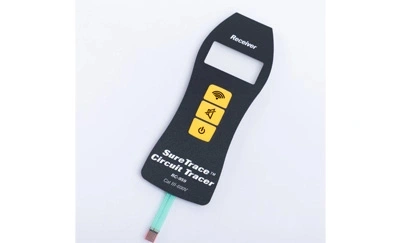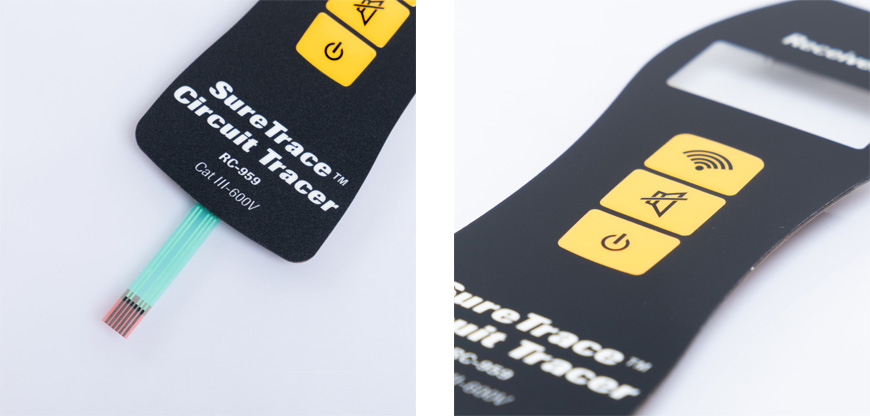
In the fast-paced world of technology, user interfaces play a pivotal role in determining the success of any electronic device or equipment. Membrane switch prototypes have emerged as a game-changing innovation, revolutionizing how users interact with various devices. In this article, we will delve into the world of membrane switch prototypes, exploring their significance, construction, applications, and the advantages they offer.

1. Introduction
2. What is a Membrane Switch?
3. Construction and Components
Membrane Layers
Conductive Traces
Graphic Overlay
4. Working Principle
5. Advantages of Membrane Switch Prototypes
Durability
Customization
Cost-Efficiency
6. Applications Across Industries
Medical Devices
Industrial Control Panels
Consumer Electronics
7. Membrane Switch vs. Traditional Switches
8. Future Trends
9. Conclusion
10. FAQs
In today's digital age, we encounter user interfaces everywhere, from microwave ovens to medical equipment and automotive dashboards. Membrane switch prototypes are at the forefront of user interface technology, offering a versatile and reliable solution for a wide range of applications.
A membrane switch is a user interface technology consisting of several flexible layers, typically including graphic overlays, conductive traces, and a substrate. These layers work together to create a seamless interface between the user and the device, enabling input and control.
Membrane switches are constructed using multiple layers of flexible materials. These layers include:
Top Graphic Overlay: This layer provides the interface for user input. It features printed symbols and graphics, allowing users to identify and interact with specific functions.
Spacer Layer: The spacer layer separates the top graphic overlay from the other conductive layers, preventing unintended actuation.
Conductive Layers: These layers consist of conductive traces and are responsible for transmitting signals when the membrane is pressed.
Conductive traces are a critical component of membrane switches. They are thin, printed circuits that carry electrical signals from the user's touchpoint to the device's control system. These traces are typically made of materials like silver or copper.
The graphic overlay is the visible part of the membrane switch. It displays icons, labels, and instructions, providing users with a clear and intuitive interface. It is often made of materials that offer durability and resistance to wear and tear.
When a user applies pressure to a specific area on the graphic overlay, the top layer flexes, bringing the conductive traces into contact with each other. This connection completes an electrical circuit, sending a signal to the device's control system. The device then responds accordingly, registering the user's input.
Durability
Membrane switches are known for their durability. They are resistant to moisture, dust, and chemicals, making them suitable for use in harsh environments. Additionally, their lack of moving parts reduces wear and tear, resulting in extended lifespans.
Customization
One of the significant advantages of membrane switch prototypes is their customization potential. Manufacturers can tailor the graphic overlay to meet specific design and branding requirements, ensuring a unique and user-friendly interface.
Cost-Efficiency
Compared to traditional mechanical switches, membrane switch prototypes offer cost-effective solutions. Their simplified construction and reduced maintenance requirements translate to lower production and operational costs.
Medical Devices
Membrane switch prototypes find extensive use in medical devices such as patient monitors, diagnostic equipment, and infusion pumps. Their durability and resistance to contamination make them ideal for healthcare settings.
Industrial Control Panels
In industrial settings, control panels require robust and reliable user interfaces. Membrane switches provide tactile feedback and withstand exposure to industrial environments, making them indispensable in control panels.
Consumer Electronics
From TV remote controls to kitchen appliances, membrane switches are prevalent in consumer electronics. Their sleek design and customizable overlays enhance the user experience in everyday devices.
Compared to traditional mechanical switches, membrane switch prototypes offer several advantages, including a quieter operation, enhanced design flexibility, and improved resistance to environmental factors.
As technology continues to advance, membrane switch prototypes are expected to evolve further. Future trends may include enhanced touch sensitivity, integration with IoT devices, and even thinner and more flexible designs.
Membrane switch prototypes have transformed the way users interact with electronic devices. Their durability, customization options, and cost-efficiency have made them indispensable across various industries. As technology continues to evolve, we can expect membrane switches to remain a key player in user interface technology.
What materials are commonly used in the construction of membrane switch prototypes?
Membrane switch prototypes are typically constructed using materials such as silver or copper for conductive traces and durable overlays made of polyester or polycarbonate.
Are membrane switches suitable for outdoor applications?
Yes, membrane switches are suitable for outdoor use as they are resistant to moisture and environmental contaminants.
Can membrane switches be retrofitted into existing equipment?
Yes, membrane switches can often be designed to fit into the existing space and interface requirements of a device, making them a viable option for retrofitting.
What is the lifespan of a membrane switch prototype?
Membrane switches are known for their long lifespan, which can range from tens of thousands to millions of actuations, depending on the quality and design.